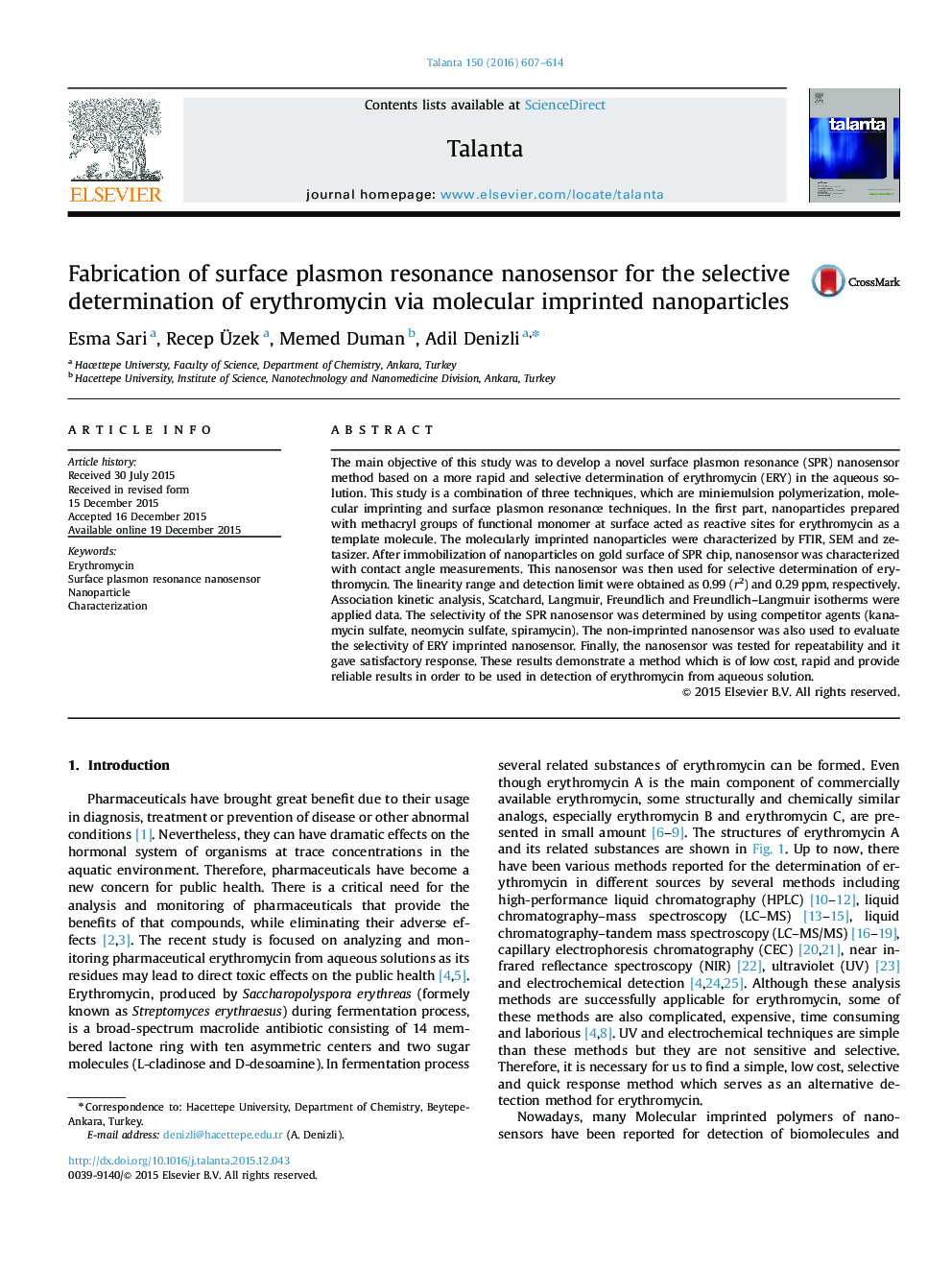| Article ID | Journal | Published Year | Pages | File Type |
|---|---|---|---|---|
| 1242212 | Talanta | 2016 | 8 Pages |
•SPR nanosensor for the sensitive detection of erythromycin.•SPR nanosensor was characterized by using contact angle measurements, zetasizer, FTIR and SEM.•High selectivity towards erythromycin with a detection limit of 0.40 µM.
The main objective of this study was to develop a novel surface plasmon resonance (SPR) nanosensor method based on a more rapid and selective determination of erythromycin (ERY) in the aqueous solution. This study is a combination of three techniques, which are miniemulsion polymerization, molecular imprinting and surface plasmon resonance techniques. In the first part, nanoparticles prepared with methacryl groups of functional monomer at surface acted as reactive sites for erythromycin as a template molecule. The molecularly imprinted nanoparticles were characterized by FTIR, SEM and zetasizer. After immobilization of nanoparticles on gold surface of SPR chip, nanosensor was characterized with contact angle measurements. This nanosensor was then used for selective determination of erythromycin. The linearity range and detection limit were obtained as 0.99 (r2) and 0.29 ppm, respectively. Association kinetic analysis, Scatchard, Langmuir, Freundlich and Freundlich–Langmuir isotherms were applied data. The selectivity of the SPR nanosensor was determined by using competitor agents (kanamycin sulfate, neomycin sulfate, spiramycin). The non-imprinted nanosensor was also used to evaluate the selectivity of ERY imprinted nanosensor. Finally, the nanosensor was tested for repeatability and it gave satisfactory response. These results demonstrate a method which is of low cost, rapid and provide reliable results in order to be used in detection of erythromycin from aqueous solution.
Graphical abstractFigure optionsDownload full-size imageDownload as PowerPoint slide
